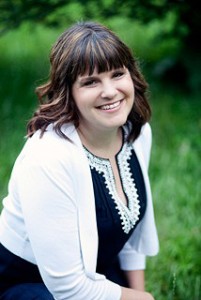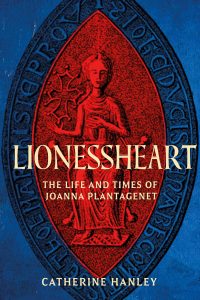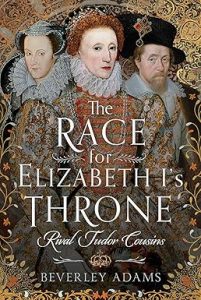Laura Andersen is the author of the Boleyn Trilogy, ‘The Boleyn King, The Boleyn Deceit and The Boleyn Reckoning’ and ‘The Virgin’s Daughter,’ from the ‘Tudor Legacy Trilogy.’
‘The Boleyn Reckoning’ was published in the UK in July 2015.
Follow Laura Andersen on Social Media:
Laura’s Website: Laura Andersen Books
Twitter: @LauraSAndersen
Facebook: Laura S Andersen
Many thanks to Laura for answering my answering my questions.
What inspired you to write the Boleyn trilogy?
In 2003, as I was reading a biography of Anne Boleyn, I found myself asking, “What if Anne hadn’t suffered her final miscarriage?” Such a personal tragedy, the loss of that little boy, but it triggered the final upheaval of her tempestuous relationship with Henry.
For the next year, that lost baby boy haunted me—until one day, I realized that I could write his story. I could imagine what might have been for Anne and Henry if fate had allowed them that son. And once I found the framework for that story, I couldn’t stop. Several months into writing the original draft—the third manuscript I wrote—I emailed my friend: “This is the book that is going to sell.”
I just didn’t know it would take dozens of rejections and a solid six years!
Were the new or ‘established historical figures’ easier to write?
The completely fictional characters were much the simpler for me to write. Especially if we’re talking about Point of View characters: of the “Holy Quartet,” Elizabeth Tudor terrified me! So much so, that I had to remind myself that, in a sense, my Elizabeth is fictional. But my respect for those who actually lived imposed a responsibility that was not always comfortable. In any case, during my most recent visit to London in 2013 (shortly after the release of The Boleyn King in the U.S.), I visited Elizabeth’s tomb in Westminster Abbey . . . and I may have apologized softly for making free with her life and heart.
‘But if William is to be what we want, the world will need to think of him only as Henry’s son. It is a King I am creating now whatever the cost.’ (p.5 The Boleyn Deceit). By the end of the trilogy had George Boleyn achieved this aim?
George Boleyn created a king, yes . . . but as long as he stood next to his nephew, Will could never be seen only as Henry’s son. To truly achieve his aim, George Boleyn would have had to keep himself in the background as much as he tried to keep Anne. Sadly for both of them, the moment Will proved himself independent of his uncle was the very moment when George would have been the most useful to him.
Why did you choose the characters of Minuette and Dominic?
Is it too much of a writer trope to answer: “They chose me?” Before I even had the outline of a story, I stood in a corridor at Hampton Court Palace and had an overwhelming impression—a young woman looking out a window and waiting impatiently for someone to appear. And thus was born Minuette in all her restless, cheerful, generous-hearted beauty.
Dominic was much the same. On that same trip, I stood by Traitor’s Gate in the Tower of London and felt shivers run down my back. I could feel a man watching his wife brought into the Tower, wishing passionately to save her. From that moment, Dominic and Minuette became the irreducible core of the story that became The Boleyn Trilogy.
How difficult a scene to write was Mary Tudor’s recognition of Queen Anne in ‘The Boleyn King’? How important was this event to the story?
This was one of the most fun scenes to write! It’s a critical scene, in my opinion, to highlight William’s growing sense of his own power. He intends, as he says, to begin as he will go on and that means bringing his sister in line. Also, it’s a gesture of affection for his mother. Conditioned by Anne, neither of her children are openly sentimental, but this is Will’s way of acknowledging her position and her sacrifices.
Several characters meet similar fates to those they really met historically, e.g. Guildford Dudley. Why did you choose this fate for him?
One of the great pleasures of writing alternate history is twisting facts so I can come at them from a different direction. When writing historical figures in an alternate history, my guiding principle is: Events Change; People Don’t. Elizabeth Tudor remains brilliant, pragmatic, and a little vain. George Boleyn is both talented and arrogant. The Duke of Northumberland is highly ambitious, and Guildford will do as his father wishes.
Also, for those who know the history, I hope there is a feeling of symmetry when alternate events and choices lead to a very similar end.
Lady Jane Grey makes several non-speaking appearances in the first two novels. Why did you expand her role in ‘The Boleyn Reckoning’?
The flippant answer: I was running out of living characters. The serious answer: I felt Jane had a critical part to play as William’s life begins to unravel. She adds a depth and quiet strength to an increasingly frantic court; and I think Minuette, in particular, is humbled by her encounters with a woman whom she has never especially taken notice of before.
Was Jane an easy character to write and why did you decide on her particular fate?
Perhaps my biggest regret with Jane is that she’s never a POV character. Necessarily, then, she is only seen through the eyes of others: Minuette and William, mostly. Will, in particular, is viewing her from a biased perspective; i.e. what use is Jane to him? Because of that, Jane appears much more passive than I think is fair. Jane Grey may not have had the fire and passionate charisma of her Tudor cousins, but she deserved better than either my world or actual history gave her.
As for her fate in my world? Honestly, I needed an event that would shatter William’s last hope for the future. Perhaps one day, Jane Grey will live again in an alternate history that will be kinder to her.
How did you decide on the ending of the trilogy?
My original draft of THE BOLEYN KING was one long story. After signing with agent Tamar Rydzinski—while waiting on a submission that ultimately did not sell—Tamar suggested I turn that draft into a trilogy. Once I sold the first book, I had to decide whether or not to keep the original ending—which was decidedly bleak. Otherwise known as, “Everybody dies.”
Spoiler Alert:
I had very little difficulty allowing Minuette to live in my rewritten story. In the same way, I always knew Will had to die. My struggle was with Dominic. Frankly, I was probably halfway through writing THE BOLEYN RECKONING before I decided on Dominic’s ultimate fate.
In the end (pun intended), I am very satisfied with the choices the characters and I made.
What is your next book about?
In May, THE VIRGIN’S DAUGHTER was released in the U.S. The first in the Tudor Legacy trilogy, the story opens in 1580 with Queen Elizabeth facing an imminent divorce from King Philip of Spain. Their daughter, Anne Isabella, is a flash point for those who want England returned to Catholicism. Mary Stuart is imprisoned, Jesuit priests are being smuggled into England, and Elizabeth must trust the daughter of her oldest friends to unravel a plot aimed at her throne. French spies, Catholic assassins, rebellious daughters . . . Elizabeth and England must rely on one young woman’s quick wits and loyal heart to survive.





































